#sfjazz center
Explore tagged Tumblr posts
Text
youtube
Monologo de la Luna and NÍjar by Paolo Angeli, live for the SF Jazz Center
#music#live#live music#italian music#sardinian music#paolo angeli#sardinian guitar#prepared guitar#guitar music#guitar#san francisco jazz organization#sfjazz center#sfjazz#fridays live#federico garcia lorca#bodas de sangre#federico garcía lorca#Youtube
24 notes
·
View notes
Text

Kronos Quartet has announced its eighth-annual Kronos Festival, to take place at SFJAZZ Center, June 22–24, 2023. This year's festival celebrates works created for Kronos Fifty for the Future, a commissioning, performance, education, and legacy project. Featuring pieces by Rhiannon Giddens, Philip Glass, Zakir Hussain, Angélique Kidjo, Terry Riley, Wu Man, and more, the festival is hosted by Kronos in multiple performances over three days; the group is joined by Aizuri Quartet, Attacca Quartet, and Friction Quartet plus special guests Rafiq Bhatia (guitar), Soo Yeon Lyuh (haegeum), sound artist and instrument-maker Victoria Shen, and student ensembles from the San Francisco Conservatory of Music. Details/tickets here.
#kronos quartet#kronos festival#sfjazz center#live music#contemporary classical music#string quartet#rhiannon giddens#philip glass#zakir hussain#angelique kidjo#terry riley#wu man#attacca quartet#nonesuch#nonesuch records
1 note
·
View note
Text
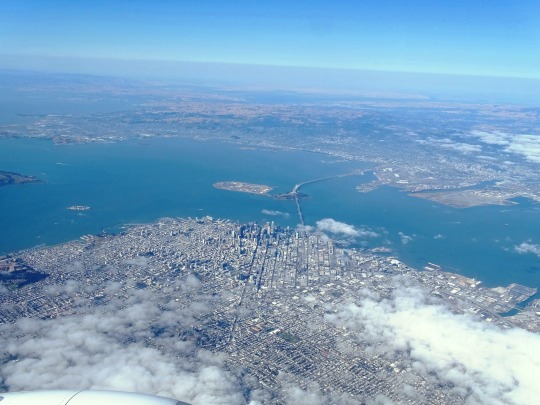
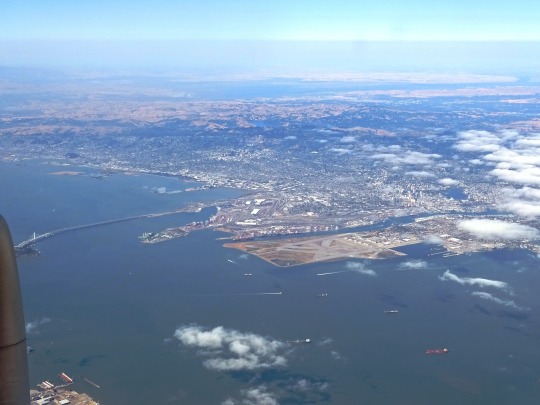
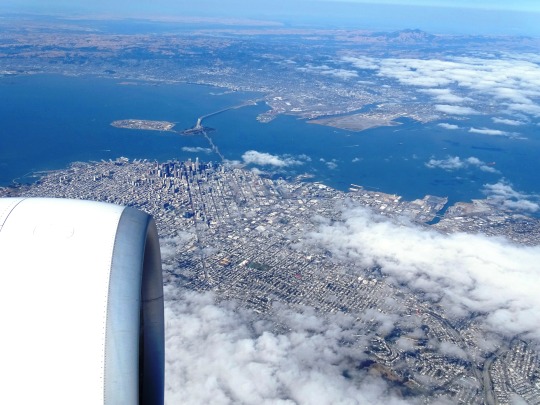
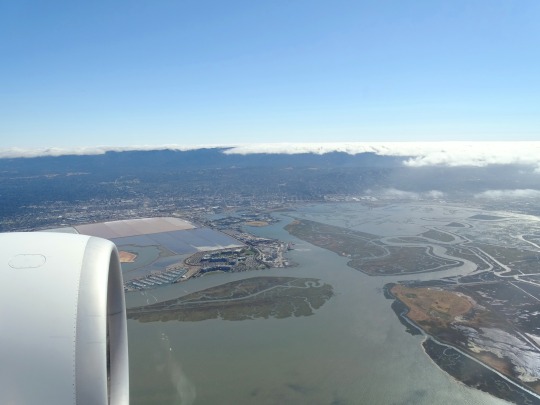

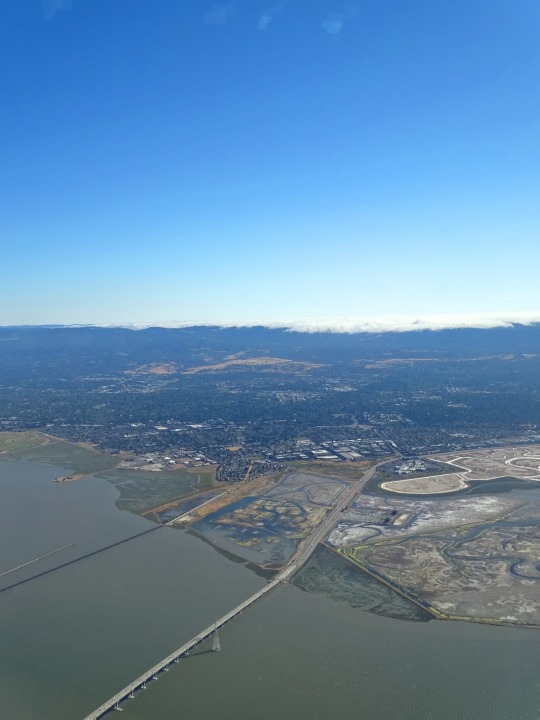
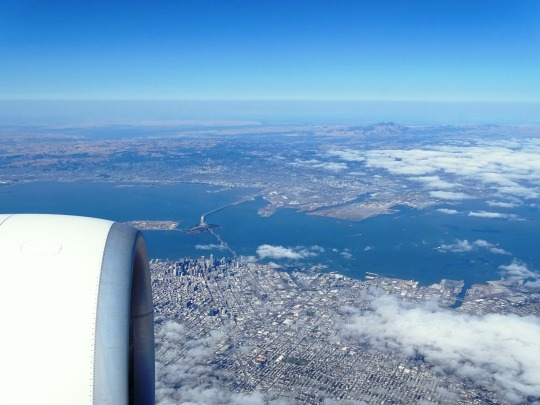

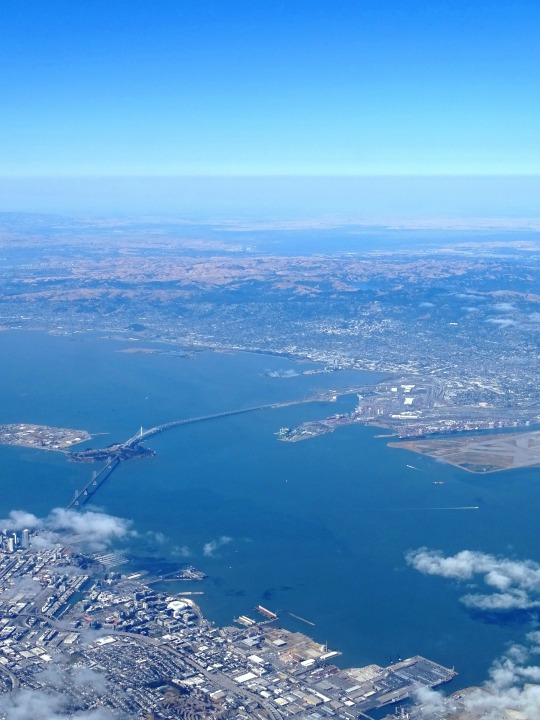
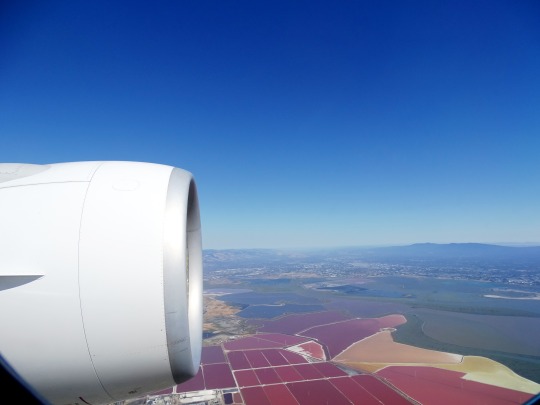
Flying West (No. 6)
San Francisco and the surrounding San Francisco Bay Area are a global center of economic activity and the arts and sciences, spurred by leading universities, high-tech, healthcare, finance, insurance, real estate, and professional services sectors. As of 2020, the metropolitan area, with 6.7 million residents, ranked 5th by GDP ($874 billion) and 2nd by GDP per capita ($131,082) across the OECD countries, ahead of global cities like Paris, London, and Singapore. San Francisco anchors the 13th most populous metropolitan statistical area in the United States with 4.6 million residents, and the fourth-largest by aggregate income and economic output, with a GDP of $729 billion in 2022. The wider San Jose–San Francisco–Oakland Combined Statistical Area is the nation's fifth-most populous, with around nine million residents, and the third-largest by economic output, with a GDP of $1.32 trillion in 2022. In the same year, San Francisco proper had a GDP of $252.2 billion, and a GDP per capita of $312,000. San Francisco was ranked fifth in the world and second in the United States on the Global Financial Centres Index as of September 2023. Despite a continuing exodus of businesses from the downtown area of San Francisco,[43][44] the city is still home to numerous companies inside and outside of technology, including Salesforce, Uber, Airbnb, X Corp., Levi's, Gap, Dropbox, and Lyft.
In 2022, San Francisco had more than 1.7 million international visitors – the fifth-most visited city from abroad in the United States after New York City, Miami, Orlando, and Los Angeles – and approximately 20 million domestic visitors for a total of 21.9 million visitors. The city is known for its steep rolling hills and eclectic mix of architecture across varied neighborhoods, as well as its cooling summers, fog, and notable landmarks, including the Golden Gate Bridge, cable cars, and Alcatraz, along with the Chinatown and Mission districts. The city is home to a number of educational and cultural institutions, such as the University of California, San Francisco, the University of San Francisco, San Francisco State University, the San Francisco Conservatory of Music, the de Young Museum, the San Francisco Museum of Modern Art, the San Francisco Symphony, the San Francisco Ballet, the San Francisco Opera, the SFJAZZ Center, and the California Academy of Sciences. Two major league sports teams, the San Francisco Giants and the Golden State Warriors, play their home games within San Francisco proper. San Francisco International Airport (SFO) offers flights to over 125 destinations while a light rail and bus network, in tandem with the BART and Caltrain systems, connects nearly every part of San Francisco with the wider region.
Source: Wikipedia
#Don Edwards San Francisco Bay National Wildlife Refuge#Cargill Salt#San Francisco Bay Area#San Francisco#Oakland#Berkeley#Pacific Ocean#Golden Gate#San Francisco–Oakland Bay Bridge#Alcatraz Island#travel#original photography#vacation#tourist attraction#landmark#architecture#landscape#countryside#on board#plane#USA#deep blue sky#clouds#California#West Coast#farmland#fields#nature#flora#ships
6 notes
·
View notes
Link
Bassist Reggie Workman, in tandem with choreographer Maya Milenovic Workman, has been awarded a 2020 Guggenheim Fellowship for music composition, the organization announced Wednesday.
The pair joins “a diverse group of 175 writers, scholars, artists, and scientists,” according to the Guggenheim website. Other performers receiving a fellowship this year are experimental composer Ellen Fullman, and musician and filmmaker Robert Millis.
The fellowship is intended to support already-proven talents in their development of new projects and research.
“Not only is he such a creative musician, but he’s one of the nicest people I’ve ever known in my entire life,” bassist Christian McBride said, while discussing his first meeting as a 17-year-old student with Workman.
Workman, who teaches at The New School in New York City, might be best known for his work with John Coltrane, but the bassist’s discography also includes albums by Art Blakey, Bobby Hutcherson and Cedar Walton.
The Guggenheim honor follows another recent accolade as Workman was named a 2020 National Endowment for the Arts Jazz Master. The April NEA ceremony, which had been slated for the SFJAZZ Center in San Francisco, has been postponed due to the coronavirus pandemic.
For additional information about the Guggenheim Fellowship, visit the foundation’s website. DB
3 notes
·
View notes
Text
50 Years of Going to Shows, Pt. 9: Jazz in St. Louis
I am in the middle of my fourth year of attending shows at Jazz at the Bistro and it is a great joy to have this formative music back so centrally in my life, to make this my go to music, to think about music in jazz terms. From that first Johnny Winter blues jam, I’ve always been drawn to virtuosic playing. Certainly rock and ur-jam band guitarists were a start. But I saw Norman Blake flat pick amazingly in those early years and later Celtic fiddlers and box players amazed me. Chamber music but also Irish sessions have an intimate conversational aspect. But it’s jazz that has it all. I sensed that in the early 70s and it’s where I’ve come home to now.
I kept my eye on jazz before the Bistro, particularly through Webster University’s wonderful jazz faculty and their performances. I would return to tried and true recordings, starting with Miles, Monk, and Mingus and Bill Evans at the Village Vanguard. I knew I couldn’t miss Sonny Rollins when he played UMSL’s performing arts center in 2009 and had even better tickets for a return a few years later that he had to cancel. He was vital, transforming from a tentative, slightly stooped old man into a flurry of ideas dancing lightly around the stage delighted in the choruses he unfolded for himself and others. He had a guitarist (not a pianist), a trombone, drums and percussion, and Bob Crenshaw. Standards and Ellington. But it was a bit of a one off.
It has taken season packages at Jazz St. Louis for four years now to get the engagement and focus that I now have.It’s fitting that the first one was Bill Charlap and his trio. That configuration is where I’m glad to start, going back to Oscar Peterson when I was 8. I’m almost too vociferously anti-musical theater, except jazz musicians have done wonderful things with and burnished the Great American Song Book. Charlap is one of our key curators. But these aren’t museum pieces in his hands; they are a dynamic legacy kept alive by use. There’s taste, drive, invention in tradition. Just like that Johnny Winter concert in early fall of 1969, there was something I had to have more of.Next up was Vijay Iyer, also in a trio. A different aesthetic but he worked a jam into Epistrophy, so tradition prevails. And the piano trio’s elasticity continued to win me over. The Bad Plus begins the year in St. Louis and we were where the rebooted when Orrin Evans replaced Ethan Iverson. I saw them once with Iverson, couch toured that opening run of BP2.0, saw them last year and plan to see them next in January. I started to get them seeing them live, seeing how the compositions work and how they work them. I think they’re a little warmer and organic with Evans, just as smart and clever but grounded. I’ve seen Benny Green swing hard and Cyrus Chestnutt do so as well but then throw in a good chunk of French Impressionism. Emmet Cohen’s band was the foundation for an odd mix of horn players I wanted to see: Marquis Hill and, for a second time, Melissa Aldana. The five of them didn’t quite jell, but the Cohen trio is a working band I would see again. Kenny Barron was a monument of taste and command and Chick Corea was impish, a grand old man of the music in spite of himself. There were standards but also a glorious exposition on Paco de Luca’s Zyriab, pulling together the Arabic roots of Flamenco. So, piano trios always with the Bad Plus, Christian Sands at the Sheldon Concert Hall down the street (where I saw Eliane Elias with Marc Johnson do wonderful Brazilian stuff but also some superb jazz evoking Bill Evans), and Connie Han ahead.
Now, we’re Miles Davis’s hometown and folks know that. The SF Jazz Collective came to the Bistro in 2017 with a program of his music (wide ranging—Tutu and Bitches Brew as well as Nardis for an acoustic ensemble) as well as compositions from band members in the ensemble. It’s a grand concept—a four horn front line with vibes and rhythm section, with some general stability but it’s morphed over the years. Everyone composes and arranges and they celebrate a composer each season. Our band was Sean Jones, David Sanchez, Miguel Zenon, Robin Eubanks, Warren Wolf, Edward Simon, Matt Penniman, and Obed Calvaire. They return to the Sheldon this year for an In a Silent Way tribute with mostly the same folks—so anther chance to see Sanchez and Zenon who were particularly impressive. Russell Gunn evoked Miles’s Blackhawk set with Jimmy Cobb holding down the drum chair very capably at age 90.
After piano tours and Milesiana, there are tenors. So I couch toured a conversation and partial set with Benny Golson—not quite in the room with a legend but a vivid experience. I am intrigued and enthralled at the playing of Melissa Aldana who crafts vivid lines that fill space quite fully (she has some great trio work) with ideas rather than tone. Her own quartet had over active drumming from Tommy Crane whereas the Emmet Cohen show pulled her in multiple directions (blusier, mostly) than she quite fit. She is a star in Artemis, but shares the front line with Anat Cohen and Ingrid Jensen, but she is one star among many. So I haven’t quite heard the ideal Aldana show. But I am glad to keep trying.
I’ve been able to see Joshua Redmond twice. As great as his tenor invention is, his band (with Aaron Goldberg) was what impressed me most. The way longstanding bands like this (and Branford Marsalis’s with Joey Caldazzaro) think together is very special. Marsalis and Caldazzaro would magically complete one another’s thoughts and both tenors took great delight in what their bands could do, soloing all the better because of it. In these bands, but most of them, including the trios, I an struck with just how good drummers have become, really playing music beyond rhythm. Allison Miller has a Jazz Night in America video on “melodic drumming,” so it was a treat to see her with Artemis, listening so hard but happily to inflect the music so well. She was almost the one to keep one’s eyes on, except that Anat Cohen exudes such unbridled joy at all times. Her quartet show was a real highlight of 2018-2019. I am so glad she and Ben Goldberg are making the clarinet a modern jazz instrument.
Joe Lovano came through with the brilliant and adventurous John Scofield who plays with Phil Lesh and Warren Haynes. I find myself shying away from jazz guitar preferring the piano. But that was quite a show as was Scofield again with Jack DeJohnette’s Hudson project which jammed out originals and The Band/Hendrix/Joni Mitchell very well. DeJohnette has quite a palette of drums and especially cymbals. We were 4 rows back on his side so we had a literally ringside seat for that magic at the Sheldon.
I have made a point to hear the likes of Marquis Hill, Robert Glasper, Stefon Harris, and, most recently, Terence Blanchard to hear how hip hop is being incorporated into jazz as funk was in my youth and rhythm and blues was in the ‘50s. My younger generation didn’t bring that music home, so I don’t have that sensibility. But I would be an old fart in extremis if I didn’t welcome those influences. That said, I am more intrigued with how SFJAZZ takes the essence of electric Miles into acoustic music than vocoders and loops and reverb. But, every time these newer shows have lots to delight in, including drummers who move the beat around and are not confined by any strictures.
The music is supposed to grow. And I get to watch it.
--------------------
This entry is the last one of this 10 part series this Fall celebrating the 50th Anniversary of concert going, marked by my second one from 11/4/69 with Led Zeppelin. Yes, this is part 9, but, rather like the Beatles releasing Abbey Road before Let It Be (actually, not like those monuments at all), I have already posted a part 10 about the shows I didn’t see. But, wrapping up with jazz makes a certain amount of sense.
1 note
·
View note
Photo

An Experimental Music Scene Grows in Brooklyn
As hard as the cultural establishment, such as it is, tries to freeze jazz in a classical, bygone era, green shoots continue to fight their way forward into an exciting future. The SFJAZZ CENTER in San Francisco has acknowledged that the clubs of a previous time cannot nurture an entire city in today's economic times, so they've innovated an institutional approach that's almost the polar opposite of the stultifying methods of old line East Coast bodies. Musicians themselves are often the centers of business transformation too, such as iBeam in Brooklyn, and the new Public Records performance space in Brooklyn, both recently featured in the New York Times.
-Fred Seibert
Read from the New York Times…
Follow: Mosaic Records Facebook Tumblr Twitter
#Today's jazz#Brooklyn#experimental music venues#iBeam#Public Record#Knitting Factory#Roulette#Shapeshifter Lab#Fred Seibert
7 notes
·
View notes
Link
Student Housing San Francisco - A brand-new high-rise residence for students and Interns. It offers affordable apartments and studios with full kitchens, natural light and expansive views; spaces for study, socializing and work. Located in central San Francisco, residents enjoy immediate access to transit (BART and Muni); cultural landmarks including the San Francisco Symphony, San Francisco Opera, Center for New Music and SFJAZZ center; farmers markets and grocery stores (Trader Joe's, Whole Foods and others); shopping, cafes and restaurants. The Panoramic also lies at the heart of San Francisco's thriving hi-tech district.
1 note
·
View note
Link
Student Housing San Francisco - A brand-new high-rise residence for students and Interns. It offers affordable apartments and studios with full kitchens, natural light and expansive views; spaces for study, socializing and work. Located in central San Francisco, residents enjoy immediate access to transit (BART and Muni); cultural landmarks including the San Francisco Symphony, San Francisco Opera, Center for New Music and SFJAZZ center; farmers markets and grocery stores (Trader Joe's, Whole Foods and others); shopping, cafes and restaurants. The Panoramic also lies at the heart of San Francisco's thriving hi-tech district.
1 note
·
View note
Link
Dorm Rooms San Francisco - A brand-new high-rise residence for students and Interns. It offers affordable apartments and studios with full kitchens, natural light and expansive views; spaces for study, socializing and work. Located in central San Francisco, residents enjoy immediate access to transit (BART and Muni); cultural landmarks including the San Francisco Symphony, San Francisco Opera, Center for New Music and SFJAZZ center; farmers markets and grocery stores (Trader Joe's, Whole Foods and others); shopping, cafes and restaurants. The Panoramic also lies at the heart of San Francisco's thriving hi-tech district.
1 note
·
View note
Text
Chrome Dev Conference – Putting on a Show for 1 of the Worlds biggest browsers
Let’s say you are a company that has a product of over 1 billion daily active users and you want to announce new features and upgrades. How do you get the message out to the “invite-only crowd” in addition to tens of thousands viewing online? Easy, you hire the right production team.
Argus HD partnered with the Google’s Chrome team to provide AV, live streaming and interactive breakout services for their Chrome Dev Summit held at The Yerba Buena Center For The Arts in San Francisco, California.
Chrome is one of the world’s most active browsers with over 1 billion users daily and The Chrome Dev Summit is an annual gathering for those developing for the Chrome platform. Everything and everyone developing apps from business to music to creative arts were in attendance to hear the latest announcements and products coming down the pipeline for Chrome.
Argus HD first started doing this event back in 2014 when it was just a small gathering of about 200 developers in Google’s Mountain View offices. As the Chrome platform grew world-wide, so did the Dev Summit as it moved to the SFJAZZ Center. It quickly outgrew that space and now it now takes place at the beautiful Yerba Buena Center for The Arts. Google entrusted Argus HD Productions to work alongside George P. Johnson, one of the world’s leading event and experience marketing agencies, to create a dynamic Audio Visual experience for the attendees and those watching via the live stream.
The Chrome team challenged us as to how to best present their industry leading interface, which includes movement and design, to a live audience. While this task is easy for most high-end computers, the complexity of bringing this to a 30’ LED screen and the live stream was no small task. To achieve this, Argus put together and deployed a team of highly technical and creative individuals that again pushed the boundaries of technical execution. We doubled the amount of information from the traditional 30p to latest high-end standard, 60p. This would not have been capable just a few short years ago. By keeping pace of the latest technologies, Argus was able to meet and exceed our client’s expectations for both the live and video-on-demand of the summit. It was a truly stunning show no matter how it was viewed.
Argus also helped create an interactive space for the developers which included over 50 monitors, demo stations and breakouts for the Chrome developers. Through smart design and layout of the space, the developers and attendees were able to share and demo the newest products and discuss future projects for the Chrome platform, thus, allowing Chrome to continue to stay at the top of the browser chain.
It was a hugely successful show over 2 days and attended by over 1000 people each day. Tens of thousands of people are continuing to view the 2 day event on YouTube.
Check out these 2 unique perspectives and recaps of the conference:
Chrome Dev Summit 2018 – Behind The Scenes with Paul Lewis
To know more about Live Streaming San Francisco Just do click here.
1 note
·
View note
Text

Kudos to longtime Kronos Quartet violinist John Sherba and violist Hank Dutt on their final NYC performances after 45+ years with the group—and to longtime manager Janet Cowperthwaite for hers! The final area performance of Sam Green's live documentary about Kronos, A Thousand Thoughts, at Lincoln Center was a joy to behold. Congratulations and thank you! And here’s to the final performances of John, Hank, and the film at this week’s Kronos Festival at SFJAZZ.
#kronos quartet#string quartet#sam green#a thousand thoughts#lincoln center#nonesuch#nonesuch records
1 note
·
View note
Photo

Check out this Panorama of San Francisco, California. Tonight, our founder, Benjamin Grant, will present the monthly The Long Now Foundation Seminar titled: "Overview: Earth and Civilization in the Macroscope." His talk — which begins at 7:30 p.m. at the SFJAZZ Center in San Francisco — will consider what we can learn from looking at our civilization from outer space and the impact these fascinating patterns have on our planet.
Instagram: https://bit.ly/2kig0hv
37°48'08.2"N, 122°28'27.1"W
Source imagery: DigitalGlobe
98 notes
·
View notes
Text
Monday Motivation | Plan Your Work

Kick off your week with Monday Motivation!
Tip of the week
In today's job market, it's not uncommon to submit applications for many positions. That involves lots of time, and lots to keep track of. You don't want to squander those precious hours by missing important application deadlines, mixing up companies and positions, confusing interview times, or forgetting to follow up.
Properly managing your job search is just as important as identifying job opportunities and submitting your application. If you're familiar with Microsoft Excel or a similar program, creating a spreadsheet is a simple and effective way to keep track of your job applications.
This week’s highlighted jobs:
Major Gifts Officer SFJAZZ San Francisco, CA
Director of Development North Carolina Museum of Art Raleigh, NC
Office Manager & Marketing Director Wettling Architects New York, NY
Director of Collections San Francisco Museum of Modern Art San Francisco, CA
Director of Theater Programming and Partnerships COCA-Center of Creative Arts St. Louis, MO
This week’s highlighted opportunities:
2019 Transformation Fellow University of Nevada, Las Vegas La Vegas, NV
Open Call for New York City Artists-in-Residence International Studio & Curatorial Program New York, NY
2019 Summer Residency Program for NYS Artists & Writers Saltonstall Foundation for the Arts Ithaca, NY
International Call for Art, ArtMaze Winter Edition 11 ArtMaze Magazine U.K.
Find more jobs and opportunities on NYFA Classifieds.
This post is part of a regular blog series, NYFA Creative Careers. Let us know what careers you’d like to learn more about by visiting us on Twitter: @nyfacurrent and using the hashtag #NYFAClassifieds.
- Kristin Troccoli, Sales & Partnerships Manager
Image: David M. Opdyke (Fellow in Sculpture ’05)
#creative careers#creativecareers#mondaymotivation#monday motivation#nyfacreativecareers#nyfa classifieds#nyfaclassifieds#business of art#jobs#opencallforartists#artist residency#instagram
1 note
·
View note
Photo

Jazz-artist windows-- photographed through from the second-floor lobby of the SF Jazz Center, across the street. #onfilm #filmphotography #film #filmisnotdead #filmphotography #analog #analogphotography #ishootfilm #filmisnotdead #120 #mediumformat #blackandwhite #blackandwhitephotography #fujifilm #gs670 #sanfrancisco #california #northerncalifornia #sfjazz — view on Instagram https://ift.tt/2mCj1ug
1 note
·
View note
Photo

Imminently, imminently… #overview #benjamingrant #longnow (at SFJAZZ Center)
3 notes
·
View notes
Photo

#StraitsOfinstagram #SanFranciscoStrait #SanFranciscoGulf #SanFranciscoCity #SanFrancisco #California #Strait #Gulf #Cities #CitiesOfinstagram #GulfsOfinstagram . regram @dailyoverview Check out this Panorama of San Francisco, California. Tonight, our founder @benjaminrgrant will present the monthly Long Now Foundation Seminar titled: "Overview: Earth and Civilization in the Macroscope." His talk — which begins at 7:30 p.m. at the SFJAZZ Center in San Francisco — will consider what we can learn from looking at our civilization from outer space and the impact these fascinating patterns have on our planet. To learn more about Ben's seminar, check out the link in our bio. /// Source imagery @digitalglobe . #SanFranciscoStraitSeria #SanFranciscoGulfSeria #SanFranciscoCitySeria #SanFranciscoSeria #CaliforniaSeria #StraitsSeria #GulfsSeria #CitiesSeria #CaliforniaStraitsSeria #UsaStraitsSeria #NorthAmericaStraitsSeria #CaliforniaCitiesSeria #UsaCitiesSeria #NorthAmericaCitiesSeria #CaliforniaGulfsSeria #UsaGulfsSeria #NorthAmericaGulfsSeria . #23May2018seria #23MaySeria Wednesday (San Francisco Bay Bridge)
#northamericacitiesseria#sanfranciscocityseria#sanfrancisco#northamericagulfsseria#sanfranciscostraitseria#californiaseria#23may2018seria#usastraitsseria#strait#northamericastraitsseria#gulfsofinstagram#cities#californiacitiesseria#gulfsseria#sanfranciscogulfseria#straitsseria#citiesofinstagram#citiesseria#californiastraitsseria#californiagulfsseria#usagulfsseria#california#gulf#sanfranciscostrait#sanfranciscocity#straitsofinstagram#sanfranciscoseria#23mayseria#usacitiesseria#sanfranciscogulf
2 notes
·
View notes